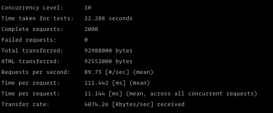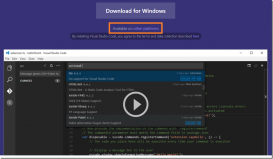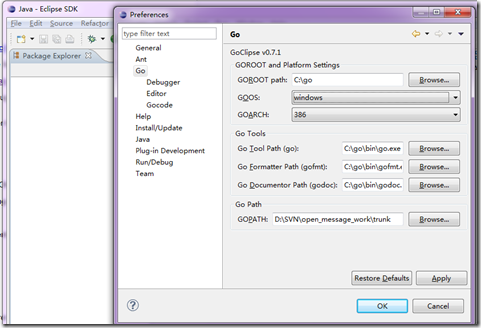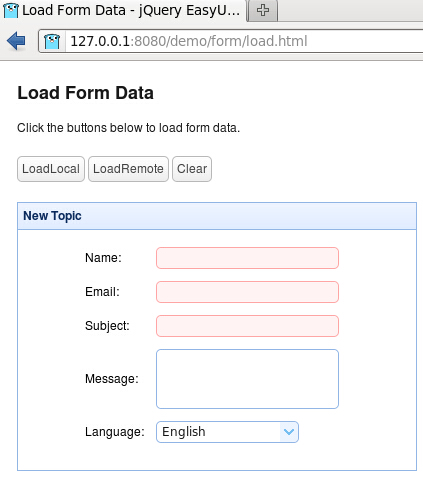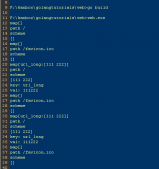使用go-kit中间件时,一般在endpoint中进行中间件的开发。
在endpoint层插入hystrix中间件的插入。
endpoint.go
|
1
2
3
4
5
6
7
|
func MakeEndpoint (svc services.StringService) endpoint.Endpoint { return func(ctx context.Context, request interface{}) (response interface{}, err error) { req := request.(*StringService.Request) rep , err := svc.Diff(ctx , req) return rep , err }} |
go-kit使我们更注重对服务逻辑的开发,对中间过程的省略会减少很多的错误发生。
main.go
|
1
2
3
4
5
6
7
8
9
10
11
12
13
14
15
16
17
18
19
20
21
22
23
24
25
26
27
28
29
30
31
32
33
|
package mainimport ( "balencegrpc/services" "balencegrpc/router" "balencegrpc/proto" "balencegrpc/discover" "balencegrpc/endpoints" "github.com/go-kit/kit/circuitbreaker" "google.golang.org/grpc" "google.golang.org/grpc/health/grpc_health_v1" "log" "net")func main() { //svc := new() svc := services.ServiceI{} endpoint := circuitbreaker.Hystrix("testname")(endpoints.MakeEndpoint(svc)) lis , err := net.Listen("tcp" , ":8081") if err != nil { log.Println(err) return } router := router.NewRouter(svc , endpoint) grpcserver := grpc.NewServer() c := discover.Service{} grpc_health_v1.RegisterHealthServer(grpcserver , &c) StringService.RegisterStringServiceServer(grpcserver , router) rs := discover.NewService() rs.Register("127.0.0.1" , 8081) grpcserver.Serve(lis)} |
我们在main.go中进行添加hystrix对endpoint进行封装,,使用hystrix进行服务熔断的处理。其实使用go-kit封装的。也可以自行封装一个中间件,在创建endpoint时进行封装
补充:go-kit微服务熔断机制的实现
在微服务架构中,每一个微服务都是一个独立的业务功能单元,而一个应用一般由多个微服务组成,微服务之间的交互是通过RPC(远程过程调用)完成。
比如,我们的应用是微服务A调用微服务B和微服务C来完成的,而微服务B又需要调用微服务D,微服务D又需要调用微服务E。如果在调用的链路上对微服务E的调用,响应时间过长或者服务不可用,那么对微服务D的调用就会占用越来越多的系统资源,进而引起微服务D的系统崩溃,微服务D的不可用,又会连锁反应的引起微服务B崩溃,进而微服务A崩溃,最终导致整个应用不可用。这也就是所谓的“雪崩效应”。
介绍
go-kit 提供了三种熔断
1、 gobreaker
2、 handy
3、 hystrix-go
hystrix用的比较多,我们来介绍下go-kit中hystrix的使用方法
go-kit的hystrix
Middleware的实现
1、 Hystrix返回Middleware 此中间件会在原来的endPoint包一层Hystrix的endPoint
2、 hystrix通过传入的commanName获取对应的Hystrix的设置,并设置run失败时运行的fallback函数为nil
3、 我们也可以自己实现middleware包装endPoint
|
1
2
3
4
5
6
7
8
9
10
11
12
13
14
|
func Hystrix(commandName string) endpoint.Middleware { return func(next endpoint.Endpoint) endpoint.Endpoint { return func(ctx context.Context, request interface{}) (response interface{}, err error) { var resp interface{} if err := hystrix.Do(commandName, func() (err error) { resp, err = next(ctx, request) return err }, nil); err != nil { return nil, err } return resp, nil } } } |
客户端hystrix配置
1、Timeout 【请求超时的时间】
2、ErrorPercentThreshold【允许出现的错误比例】
3、SleepWindow【熔断开启多久尝试发起一次请求】
4、MaxConcurrentRequests【允许的最大并发请求数】
5、RequestVolumeThreshold 【波动期内的最小请求数,默认波动期10S】
|
1
2
3
4
5
6
7
8
|
commandName := "my-endpoint" hystrix.ConfigureCommand(commandName, hystrix.CommandConfig{ Timeout: 1000 * 30, ErrorPercentThreshold: 1, SleepWindow: 10000, MaxConcurrentRequests: 1000, RequestVolumeThreshold: 5, }) |
增加熔断中间件的包装
|
1
2
3
|
breakerMw := circuitbreaker.Hystrix(commandName)//增加熔断中间件 reqEndPoint = breakerMw(reqEndPoint) |
实例
1、protobuf文件及生成对应的go文件
|
1
2
3
4
5
6
7
8
9
10
11
12
13
14
15
16
17
18
19
20
21
22
23
24
25
26
27
|
syntax = "proto3"; // 请求书详情的参数结构 book_id 32位整形message BookInfoParams { int32 book_id = 1;} // 书详情信息的结构 book_name字符串类型message BookInfo { int32 book_id = 1; string book_name = 2;} // 请求书列表的参数结构 page、limit 32位整形message BookListParams { int32 page = 1; int32 limit = 2;} // 书列表的结构 BookInfo结构数组message BookList { repeated BookInfo book_list = 1;}// 定义 获取书详情 和 书列表服务 入参出参分别为上面所定义的结构service BookService { rpc GetBookInfo (BookInfoParams) returns (BookInfo) {} rpc GetBookList (BookListParams) returns (BookList) {}} |
生成对应的go语言代码文件:protoc --go_out=plugins=grpc:. book.proto (其中:protobuf文件名为:book.proto)
注:由于演示熔断机制,也就是Server出现问题的时候进行熔断,因此本文Server端代码可以不用。
2、Client端代码
|
1
2
3
4
5
6
7
8
9
10
11
12
13
14
15
16
17
18
19
20
21
22
23
24
25
26
27
28
29
30
31
32
33
34
35
36
37
38
39
40
41
42
43
44
45
46
47
48
49
50
51
52
53
54
55
56
57
58
59
60
61
62
63
64
65
66
67
68
69
70
71
72
73
74
75
76
77
78
79
80
81
82
83
84
85
86
87
88
89
90
91
92
93
94
95
96
97
98
99
100
101
102
103
|
package main import ( "MyKit" "context" "fmt" "github.com/afex/hystrix-go/hystrix" "github.com/go-kit/kit/circuitbreaker" "github.com/go-kit/kit/endpoint" "github.com/go-kit/kit/log" "github.com/go-kit/kit/sd" "github.com/go-kit/kit/sd/etcdv3" "github.com/go-kit/kit/sd/lb" "google.golang.org/grpc" "io" "time") func main() { var ( //注册中心地址 etcdServer = "127.0.0.1:2379" //监听的服务前缀 prefix = "/services/book/" ctx = context.Background() ) //对hystrix进行配置 commandName:="my_endpoint" hystrix.ConfigureCommand(commandName,hystrix.CommandConfig{ Timeout:1000*3, //超时 MaxConcurrentRequests:100, //最大并发的请求数 RequestVolumeThreshold:5,//请求量阈值 SleepWindow:10000, //熔断开启多久尝试发起一次请求 ErrorPercentThreshold:1, //误差阈值百分比 }) breakerMw:=circuitbreaker.Hystrix(commandName) //定义熔断器中间件 options := etcdv3.ClientOptions{ DialTimeout: time.Second * 3, DialKeepAlive: time.Second * 3, } //连接注册中心 client, err := etcdv3.NewClient(ctx, []string{etcdServer}, options) if err != nil { panic(err) } logger := log.NewNopLogger() //创建实例管理器, 此管理器会Watch监听etc中prefix的目录变化更新缓存的服务实例数据 instancer, err := etcdv3.NewInstancer(client, prefix, logger) if err != nil { panic(err) } //创建端点管理器, 此管理器根据Factory和监听的到实例创建endPoint并订阅instancer的变化动态更新Factory创建的endPoint endpointer := sd.NewEndpointer(instancer, reqFactory, logger) //reqFactory自定义的函数,主要用于端点层(endpoint)接受并显示数据 //创建负载均衡器 balancer := lb.NewRoundRobin(endpointer) /** 我们可以通过负载均衡器直接获取请求的endPoint,发起请求 reqEndPoint,_ := balancer.Endpoint() */ /** 也可以通过retry定义尝试次数进行请求 */ reqEndPoint := lb.Retry(3, 100*time.Second, balancer) //请求次数为3,时间为10S(时间需要多于服务器限流时间3s) //增加熔断中间件 reqEndPoint=breakerMw(reqEndPoint) //现在我们可以通过 endPoint 发起请求了 req := struct{}{} for i:=0;i<20;i++ { //发生20次请求 ctx=context.Background() if _, err = reqEndPoint(ctx, req); err != nil { //panic(err) fmt.Println("当前时间: ", time.Now().Format("2006-01-02 15:04:05.99"),"\t第",i+1,"次") fmt.Println(err) time.Sleep(1*time.Second) } }} //通过传入的 实例地址 创建对应的请求endPointfunc reqFactory(instanceAddr string) (endpoint.Endpoint, io.Closer, error) { return func(ctx context.Context, request interface{}) (interface{}, error) { conn, err := grpc.Dial(instanceAddr, grpc.WithInsecure()) if err != nil { fmt.Println(err) panic("connect error") } defer conn.Close() bookClient := book.NewBookServiceClient(conn) bi, _ := bookClient.GetBookInfo(context.Background(), &book.BookInfoParams{BookId: 1}) fmt.Println("获取书籍详情") fmt.Println("bookId: 1", " => ", "bookName:", bi.BookName) fmt.Println("请求服务成功: ", instanceAddr,"当前时间为:",time.Now().Format("2006-01-02 15:04:05.99")) /*bl, _ := bookClient.GetBookList(context.Background(), &book.BookListParams{Page: 1, Limit: 10}) fmt.Println("获取书籍列表") for _, b := range bl.BookList { fmt.Println("bookId:", b.BookId, " => ", "bookName:", b.BookName) }*/ return nil, nil }, nil, nil} |
3、运行及分析
直接运行Client端(不用启动etcd、Server),效果如下:


通过上面的输出记录可以验证我们的配置:
1、 前5条波动期内的错误,没有触发circuit开启(RequestVolumeThreshold:5,//请求量阈值)
2、 circuit开启后请求熔断生效(输出内容:hystrix: circuit open)
3、 circuit开启10S后,SleepWindow测试发起请求设置生效(第16次输出的内容;设置:SleepWindow:10000, //熔断开启多久尝试发起一次请求)
以上为个人经验,希望能给大家一个参考,也希望大家多多支持服务器之家。如有错误或未考虑完全的地方,望不吝赐教。
原文链接:https://blog.csdn.net/Xiang_lhh/article/details/115495321





